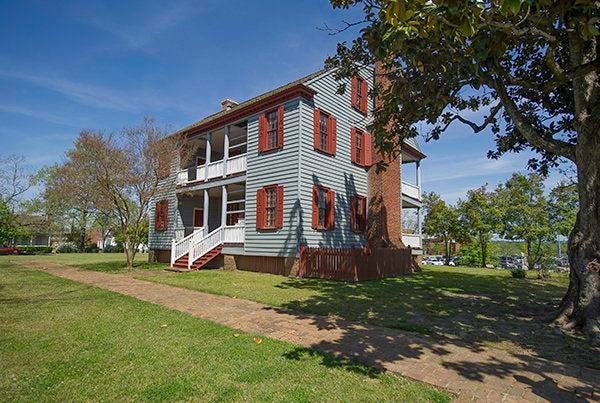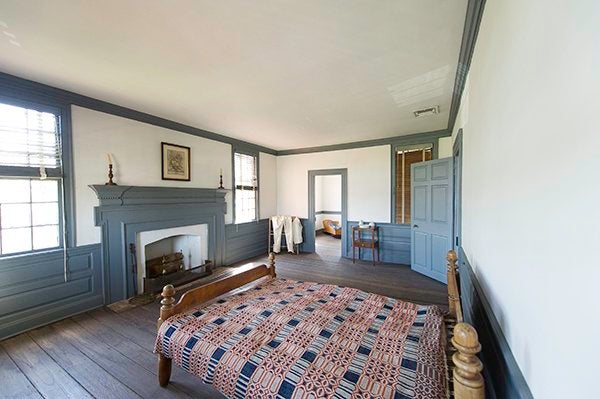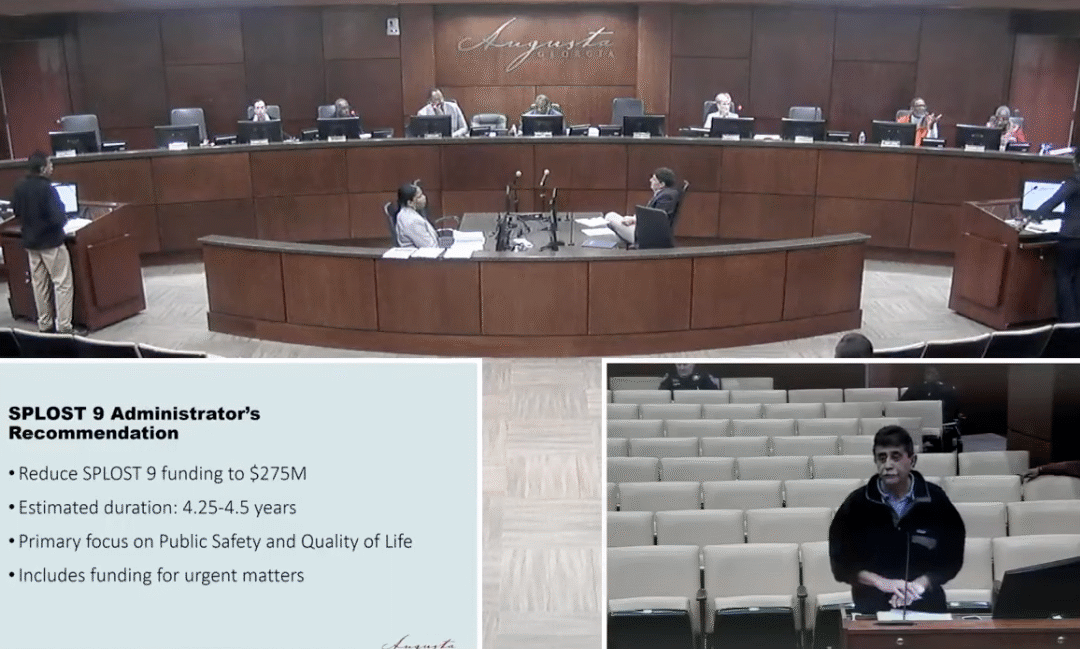The three-story gray clapboard structure that sits prominently in the Harrisburg area across from the Kroc Center has a remarkable history filled with colorful tales, some true and others imagined. One thing they all have in common is murder.
The landscape around the Federal-style home on Broad Street, which was built in 1797, has seen dramatic changes over time. The area that started as a commercial center for fur traders and later as a hub for tobacco farmers eventually saw the construction of the Augusta Canal, turning what was coined Harrisburg into the South’s industrial powerhouse.
MORE: Something You Might Not Have Known: Bobby Jones
The house, purported to be haunted for centuries, now sits silently on its hill, having overlooked Harrisburg’s decline as a manufacturing center and recent revival as a hub for the cyber industry. It almost seems to brood over the ever-changing landscape.
As Harrisburg evolved, the Harris house, still known as the Mackay house at the time, declined in appearance as the area lost its rural look with the city of Augusta encroaching past Hawk’s Gully.
The Harris house would become the lone 18th century home amidst rows of shotgun houses occupied by laborers at the mills.
By the 1950s, the house had become a run-down tenement boarding house, but no one wanted to tear it down because the house was believed to be associated with an act of barbarity dating back to the waning days of the Revolutionary War.
However, the seasoned timbers of the home survived and the home was restored in the 1960s. It has operated as a museum since that time.
Those growing up in Augusta up until the mid-1970s knew the home as the Old White House or Mackay’s Trading Post. Visitors to the imposing three-story structure were told the fantastic tale of how the British army took revenge on local patriots during the famous Siege of Augusta in 1781.
According to the story, loyalist Thomas Brown, the commander of Fort Cornwallis, which was located near present-day Saint Paul’s Episcopal Church, rounded up 13 patriots — one man for each colony in rebellion — and had them hung from the outside stairwell of the Mackay House.

However, there were problems with the tale. According to historian Ed Cashin’s book, “The Story of Augusta,” Brown did order that the 13 prisoners be hanged, but the number of men killed likely had no symbolic connotations. The number of men hanged were simply the number of men caught who refused to take an oath of loyalty to the English Crown.
Had there been a 14th patriot caught, he likely would have faced the same fate.
The location of the crime is also lost to history, but it certainly did not occur at what is known today as the Ezekiel Harris House. That building had yet to have been constructed.

The Ezekiel Harris House was built by its namesake in 1797, long after the war ended. Harris was a wealthy tobacco trader and built his home along with a large warehouse complex on the property and sought to undercut his competitor across the Savannah River, John Hammond.
Harris tried beating his rival Hammond by offering a free ferry service to South Carolina farmers looking to store their tobacco in his warehouses.
Upon reading the history of early Augusta, one might come to the conclusion that the burgeoning city of Augusta at the turn of the 18th century operated much like the Wild Wild West before there ever was a Wild Wild West.
The ferry business was lucrative because the 5th Street bridge, built in 1790, had washed away in a flood and the only way to cross the river was by boat. Besides, wooden bridges couldn’t handle large loads and the designs for steam-driven locomotives were barely on the drawing boards.
The feud between Harris and Hammond, who also owned a tobacco warehouse and ferry service, grew intense with each man accusing the other of burning each other’s ferry boats.
On the night of May 21, 1800, Hammond was found shot with a musket and he died from his wounds three weeks later. He never identified his attacker.

Harris certainly would have been the prime suspect in the crime, but it was never proven that he was the assailant. Indeed, the newspapers of the time were curiously mum on the high profile murder case.
Dueling between rivals was frowned upon at the time, but not illegal. Indeed, just four years after Hammond’s mysterious death, Vice President of the United States Aaron Burr shot and killed Treasury Secretary Alexander Hamilton in a duel. Yet, in the case of Hammond in North Augusta, no witnesses ever came forward to claim that the two men settled their feud with muskets.
Hammond’s murder would not be the only one associated with Harris. Several years before in 1797, the same year he built his infamous house, Harris was charged and later aquitted of another even more bizarre murder.
According to the Augusta Gazette, Harris and three other men were accused of getting drunk and lashing another unidentified man to his horse with a rope. The accused men claimed that they had untied the victim and let him go free. However, according to the Gazette, the victim’s body was later found with the rope still tied around his neck.
While Harris may have escaped murder charges twice, his fortunes in business appear to have turned sour. He reportedly faced bankruptcy after years of people torching his ferries and later retired to Wilkes County and seemingly into obscurity.
While Harris and Hammond have faded from memory, both men are still on the map today. Harris’ former tobacco-trading village is still known as Harrisburg and the Hammond’s Ferry neighborhood in North Augusta bears the name of Harris’ arch-rival.
MORE: Something You Might Not Have Known: J.B. Fuqua
Tours of the Ezekiel Harris House are available through the Augusta Museum of History on Saturdays by appointment, but for the rest of the time, the old house sits quietly looming over the landscape just as it has since post-colonial times.
Using the words of writer Shirley Jackson, most of the time the Harris House in downtown Augusta rests like the fictional Hill House, in that “whatever walks there, walks alone.”
And that is something you might not have known.
Scott Hudson is the Senior Investigative Reporter and Editorial Page Editor for The Augusta Press. Reach him at scott@theaugustapress.com












